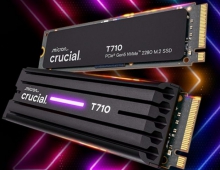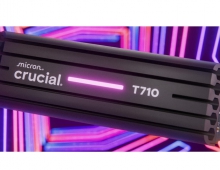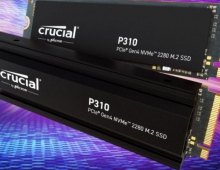Crucial MX100 512GB SSD review
1. Features
 Crucial announced during last month's Computex the Crucial MX100, its new mainstream solid-state drive, brought to replace the
Crucial announced during last month's Computex the Crucial MX100, its new mainstream solid-state drive, brought to replace the
M500 series while the M550 will continue to serve the higher performance market.
The MX100 Crucial has been designed to offer lower in terms of price per gigabyte by utilizing Micron's 16nm 128Gbit MLC NAND - the smallest process node we have seen since Toshiba's introduction of their A19nm NAND. The smaller lithography translates into smaller transistor size, which in turn means that the same amount of storage can be fit into a die that is physically smaller.
The MX100 builds on the same architecture as the M500 and M550. Their basic difference is the NAND inside as the controller is the same Marvell 88SS9189 silicon as found inside the M550. The 9189 is an upgrade over the 9187 but all it brings is a better support for DevSLP along with some bandwidth optimizations.
Other than performance, Crucial is bringing some differentiation by offering limited capacities as the MX100 will only be available at up to 512GB.
Here are the specs:
| Capacity | 128GB |
256GB |
512GB |
| Controller | Marvell 88SS9189 |
||
| NAND | Micron 16nm 128Gbit MLC |
||
| Sequential Read | 550MB/s |
550MB/s |
550MB/s |
| Sequential Write | 150MB/s |
330MB/s |
500MB/s |
| 4KB Random Read | 80K IOPS |
85K IOPS |
90K IOPS |
| 4KB Random Write | 40K IOPS |
70K IOPS |
85K IOPS |
| Endurance | 72TB (~65GB/day for 3 years) |
||
| Encryption | AES 256-bit, TCG Opal 2.0 & IEEE-1667 |
||
| Warranty | Three years |
||
As you are seeing above, the use of 128Gbit NAND results to a performance hit at smaller capacities. As the higher capacity per die means that fewer die are needed to achieve a certain capacity, parallelism is reduced, which is the key of SSD performance.
Feature wise the MX100 matches the M500 and M550. Both power loss protection and hardware encryption (including TCG Opal 2.0 and IEEE-1667 standards) are supported and the endurance rating remains at the same 72TB. RAIN (Redundant Array of Independent NAND) is also included to protect against page/block level failures and the parity ratio remains at 127:1 similar to the M550.





















